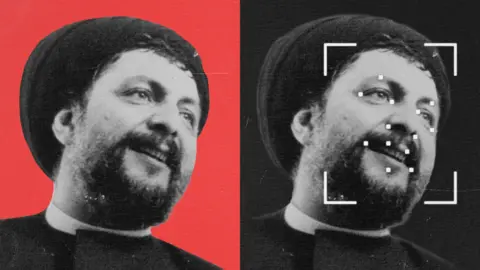Warning: Contains images some may find upsetting
A computer scientist at a university in the north of England is studying an image of a corpse - attempting to solve a mystery that has gripped the Middle East for nearly 50 years. This is what he looks like now? asks Bradford University's Prof Hassan Ugail doubtfully.
The digitized photo, taken by a journalist in 2011, shows a decomposed face that may belong to Musa al-Sadr, a charismatic cleric who disappeared in Libya in 1978. Sadr's mystery has spawned countless conspiracy theories about his fate.
The disappearance of Sadr has become as significant as historical events such as the assassination of John F. Kennedy for his ardent followers, given his background of advocating for marginalized Shia Muslims in Lebanon.
Throughout his life, he gained the title of imam from his followers, who revered him highly.
Sadr's disappearance coincided with significant political shifts in the Middle East, notably the Iranian Revolution. There are conflicting beliefs regarding his fate—some insist he is still alive, while others hold that he was murdered. The death in question reportedly had characteristics that match Sadr's height and demeanor.
Kamass Hamadé, a journalist who encountered the body in a secret mortuary, described the remains as having vivid similarities to Sadr, fueling the belief among some in the Shia community that he might have been killed as a result of dangerous political affiliations. Efforts to finally find answers have faced significant obstacles, including being detained by Libyan authorities during investigations.
As the team utilizes facial recognition technology, hopes remain high that they might conclusively identify the long-missing cleric, with reports suggesting that the decomposed body exhibits injuries consistent with execution.

















